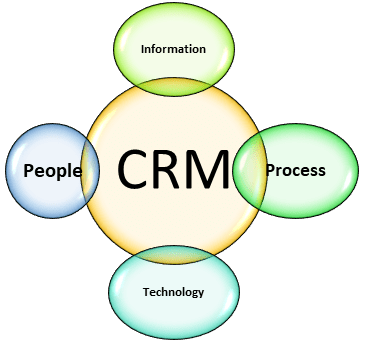At the most basic level, CRM software consolidates customer information and documents into a single CRM database so business users can more easily access and manage it.

Over time, many additional functions have been added to CRM systems to make them more useful. Some of these functions include recording various customer interactions over email, phone, social media or other channels; depending on system capabilities, automating various workflow automation processes, such as tasks, calendars and alerts; and giving managers the ability to track performance and productivity based on information logged within the system.
- Marketing Automation: CRM tools with marketing automation capabilities can automate repetitive tasks to enhance marketing efforts at different points in the lifecycle. For example, as sales prospects come into the system, it might automatically send the prospects marketing materials, typically via email or social media, with the goal of turning a sales lead into a full-fledged customer.
- Sales force automation: Sales force automation tools track customer interactions and automate certain business functions of the sales cycle that are necessary to follow leads and attract and obtain new customers.
- Contact center automation: Designed to reduce tedious aspects of a contact center agent’s job, contact center automation might include prerecorded audio that assists in customer problem-solving and information dissemination. Various software tools that integrate with the agent’s desktop tools can handle customer requests in order to cut down on the time of calls and to simplify customer service processes.
- Geolocation technology, or location-based services: Some CRM systems include technology that can create geographic marketing campaigns based on customers’ physical locations, sometimes integrating with popular location-based GPS apps. Geolocation technology can also be used as a networking or contact management tool in order to find sales prospects based on a location.
- Workflow automation: CRM systems help businesses optimize processes by streamlining mundane workloads, enabling employees to focus on creative and more high-level tasks.
- Lead management: Sales leads can be tracked through CRM, enabling sales teams to input, track and analyze data for leads in one place.
- Human resource management (HRM): CRM systems help track employee information, such as contact information, performance reviews and benefits within a company. This enables the human resource department to more effectively manage the internal workforce.
- Analytics: Analytics in CRM help create better customer satisfaction rates by analyzing user data and helping create targeted marketing campaigns.
- AI: Artificial intelligence (AI) technologies, such as Salesforce Einstein, have been built into CRM platforms to automate repetitive tasks, identify customer buying patterns to predict future customer behaviors and more.
One thought on “Components of CRM: Information, Process, Technology and People”